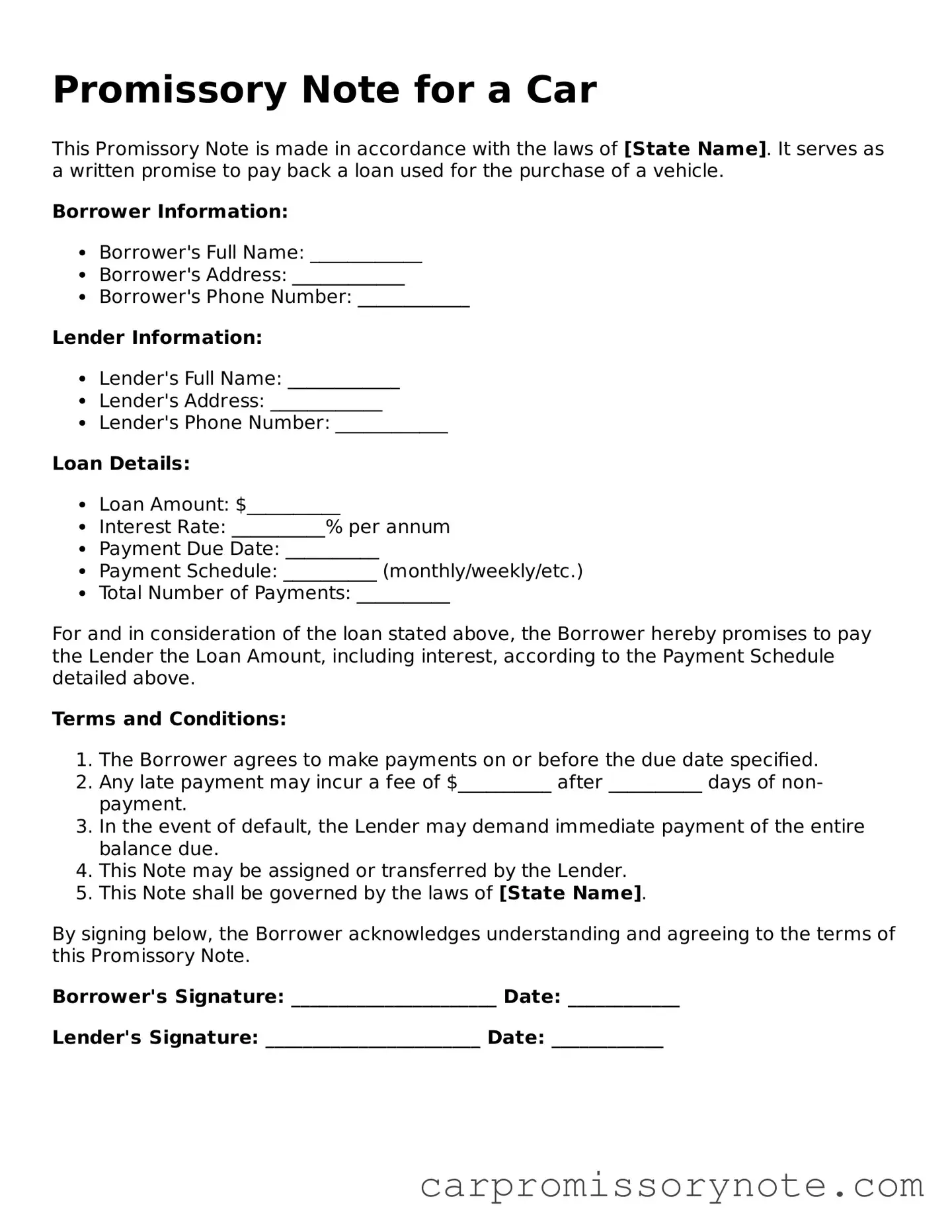A loan agreement is similar to a promissory note for a car in that both documents outline the terms of borrowing money. In a loan agreement, the lender and borrower agree on the loan amount, interest rate, and repayment schedule. The loan agreement may also include details about collateral, which protects the lender if the borrower defaults. Like a promissory note, it serves as a legal contract that binds both parties to the agreed terms.
A lease agreement shares similarities with a promissory note for a car, particularly in the context of vehicle leasing. In both cases, one party (the lessor or lender) allows another party (the lessee or borrower) to use the vehicle in exchange for payments. The lease agreement specifies the duration of the lease, monthly payments, and conditions for vehicle return. Both documents establish clear expectations and responsibilities for each party involved.
A mortgage is another document that resembles a promissory note, especially in how it secures a loan with collateral. When someone takes out a mortgage, they agree to repay the loan amount over time, much like a car loan. The property being purchased serves as collateral, meaning the lender can take possession if the borrower fails to make payments. Both documents detail the obligations of the borrower and the rights of the lender, ensuring clarity in the financial arrangement.
Understanding various financial documents is crucial for effective money management. For instance, the Ohio IT AR form serves an important purpose in the tax landscape, allowing individuals to request a refund of overpaid taxes after submitting their income tax returns. Accurate completion of this form is essential for anyone looking to reclaim funds. For further assistance with these forms, you can visit Ohio PDF Forms, which provide valuable resources for taxpayers.
An installment agreement is also akin to a promissory note for a car, as it involves a borrower making regular payments over time. In this case, the borrower agrees to pay a specific amount at set intervals until the debt is paid off. This document outlines the payment schedule, interest rates, and any penalties for late payments. Like a promissory note, it creates a clear framework for repayment, helping both parties understand their commitments.
